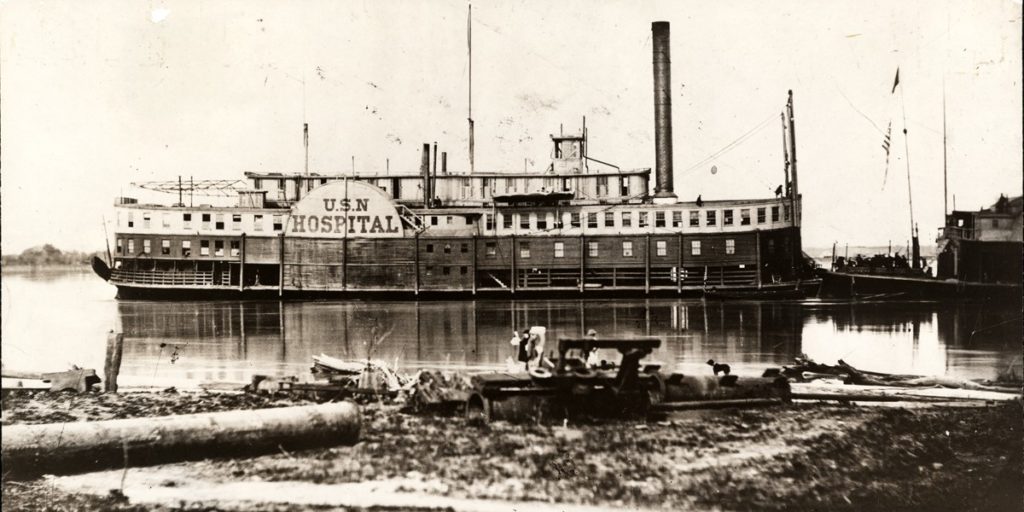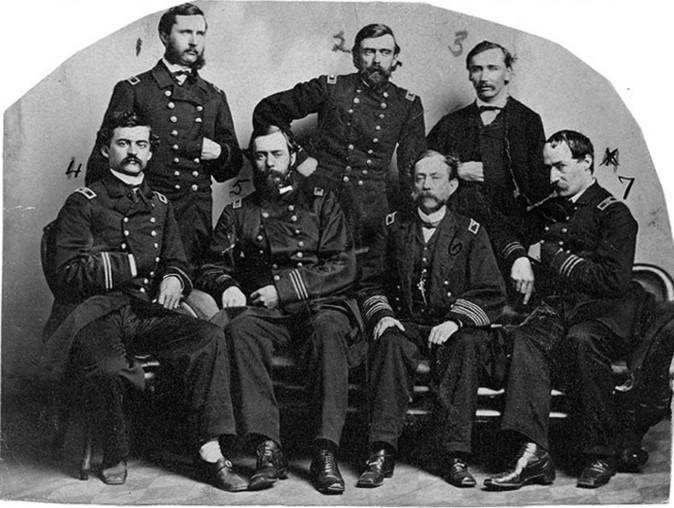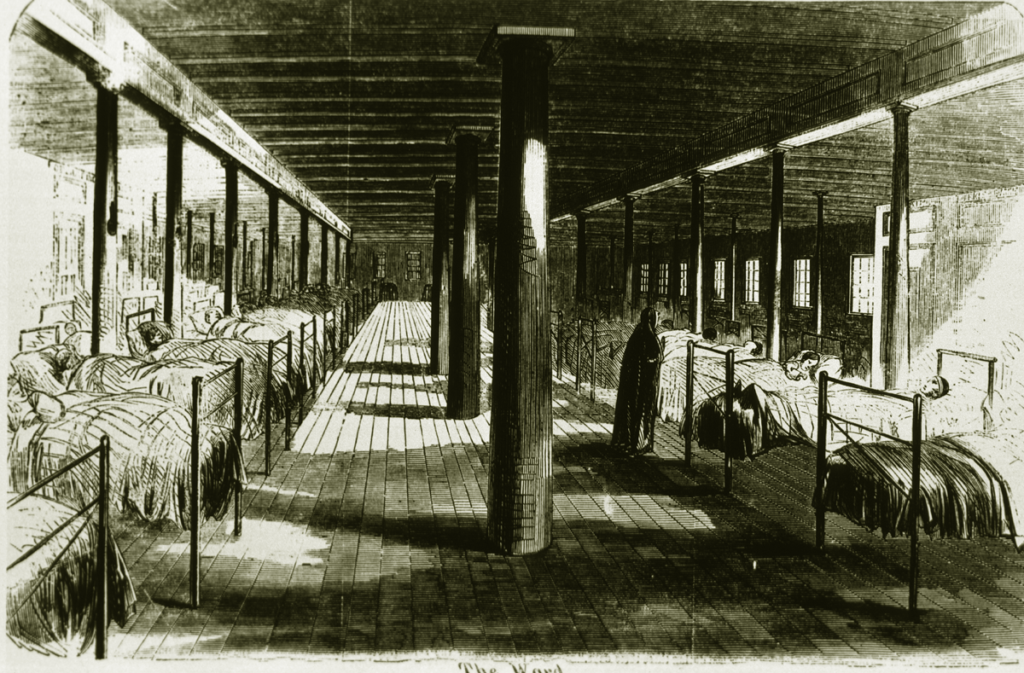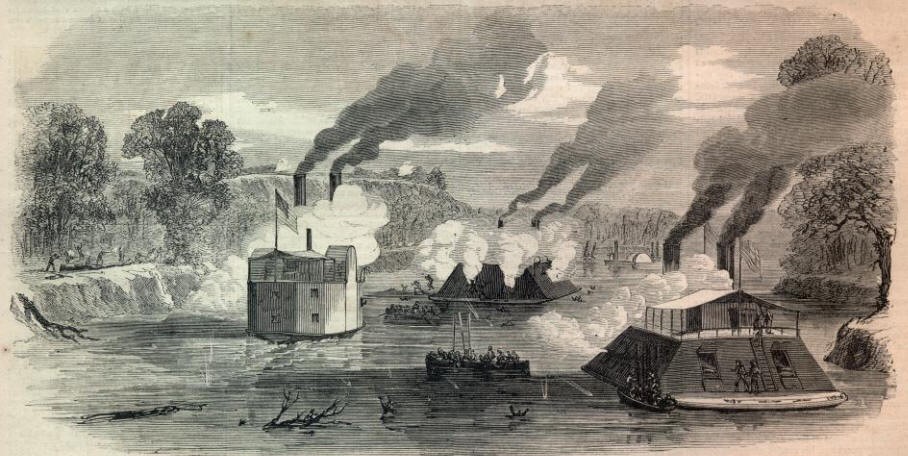Mercy on the Mississippi: The USS Red Rover Hospital Ship
Museum members support scholarship like this.
“No one but those who have witnessed it can comprehend the sufferings to which our sick have been exposed by the absence of proper accommodations on board the gunboats and by the necessity for frequent and sometimes hasty change of place . . . The arrival of the Red Rover will put a stop to all this . . .” – Flag Officer, Charles H. Davis, U.S. Navy
Captured by the US Navy in early 1862, the USS Red Rover was converted for use as the Navy’s first dedicated hospital ship. Over the course of her remarkable career, she treated more than 2,000 wounded and sick soldiers and sailors. No single vessel in the Civil War treated as many patients and gained as much renown for her merciful efforts.

The Red Rover was built in 1857 in Louisville, Kentucky. She was 256 feet long, weighed 786 tons, and could travel at a maximum speed of 9 knots.*
Her owners designed the Red Rover to provide passenger service along the Mississippi River and tributaries between New Orleans and Nashville. With the outbreak of war, however, she was purchased by the Confederate States Navy for use as “accommodations” for soldiers and sailors guarding the river systems that made up the heartland of the Confederate States.
On March 15, 1862 at Island No. 10 in the borderlands near New Madrid, Missouri, she took part in an action to halt a Union naval squadron coming down river from their base at Cairo, Illinois.

During the action at this key spot in the Mississippi River, a Confederate officer stated: “The Red Rover was cut through all her decks to her bottom by a piece of shell, which caused her to leak considerably, but not dangerously…”
Union naval forces captured Island No. 10 on April 7, and consequently also captured the CSS Red Rover. She was captured by the USS Mound City.
After the battle, the captain of the Mound City reported:
“One of our shells had passed through all her decks and bottom. Having stopped the leak and pumped her out, she can now, by some repairing be rendered a serviceable boat… ”
The battle-damaged Red Rover was towed to St. Louis were she was fully repaired, and two months later returned to service, this time as a floating hospital under the command of the U.S. Army operating in tandem with the U.S. Navy in the Western Theater.
Her outfitting as a hospital ship was superintended by Army Quartermaster Captain George Wise.
Working in tandem with the Western Sanitary Commission, who provided $3,500 in supplies for the vessel, Wise outfitted the ship with the following amenities:

“She has bathrooms, laundry, elevator for the sick from the lower to the upper deck, amputating rooms, nine different water closets, gauze blinds to the windows to keep the cinders and smoke from annoying the sick, two separate kitchens for the sick and well, a regular corps of nurses and two water closets on every deck.”
By the June 12, 1862, she had been assigned her first US Army surgeon, Dr. George Bixby. He would serve as the chief medical officer on board through the remainder of the Civil War.

Dr. Bixby wrote
“[Captain Wise] informs me that she has stores on board for her crew for three months and medical supplies sufficient for 200 men for three months. She is also abundantly [supplied] with delicacies for the sick and has on board 300 tons of ice.”
On June 11, the Red Rover received her first patient – a cholera victim from a nearby gunboat. Four more patients came aboard the same day.

Red Rover brought its first battle casualties aboard on June 17, 1862. A Confederate shell struck the Mound City, which the Red Rover accompanied on the expedition. Eight men were scalded to death by a boiler explosion, and an additional 43 died of other causes. The Red Rover took on 37 patients in the aftermath of the Mound City disaster.
The Red Rover tailedthe Union Army as it expanded operations down river towards Vicksburg, Mississippi. By the end of the year, while still in service under the command of the Army, the Red Rover had treated 374 patients, of which only 37 had died.

In the aftermath of the Red Rover’s first service at St. Charles, Arkansas, Sister Angela Gillespie wrote to the officer in command of the Western Flotilla and asked for positions aboard the Red Rover for her Sisters of the Holy Cross in mid-June 1862.
Over the course of the war, four different sisters appeared on the muster rolls of the Red Rover. The first two came aboard on Christmas Eve 1862 from the U.S. General Hospital at Mound City, Illinois. Sister Veronica C. Moran and Sister Adela M. Reilly are believed to have served with the ship until mustered out on November 15, 1865. Two other Sisters of the Holy Cross served on the vessel during its service as well. These became the first women in the service of the United States Navy. Records should that the nurses made $2 a day in service aboard the Red Rover.
On April 16, 1863, the Red Rover headed south down the Mississippi River to the outskirts of Vicksburg, Mississippi.
A large force of the US Army under General Ulysses S. Grant had pinned back a Confederate force inside the town overlooking the Mississippi. Due to the imposing nature of the terrain in this region, Vicksburg commanded the river and served as the only remaining spot preventing the Union control of the entire Mississippi River.
The USS Red Rover was designated to support General Grant’s campaign, but instead, mostly served as a hospital ship supporting the gunboats and steamers of the “brown-water navy” as the gunboats and steamers were nicknamed.

Due to her large holds, the Red Rover also supplied the gunboats with ice. It was also used in various medical treatments at the time, especially to help control fevers. Disease outbreaks in the swampy terrain along the Mississippi were rampant. Many of those treated aboard in the spring and summer of 1863 suffered from malaria and yellow fever.
The Red Rover also supplied the gunboats with supplies of food and other necessities. On April 20, she ran her first load of patients upriver to Memphis, TN, where she also received a refit, before returning to Vicksburg on May 20. For the rest of the Vicksburg Campaign, she continued to evacuate patients from the theater of action to United States hospitals in communities in the Mississippi Basin.
Following the fall of Vicksburg on July 4, 1863, the Red Rover ran a load of wounded soldiers to Memphis, bringing the victors at Vicksburg to medical care in that city’s war-time hospitals.
Abraham Lincoln famously stated after the fall of Vicksburg: “The Father of Waters again goes unvexed to the sea.” So too did the Red Rover, she began running medical supplies up and down the Mississippi to points in between New Orleans and the Union supply base at Cairo, Illinois. Before her wartime service would be complete, there was one more memorable engagement where it would lend aid – Fort Pillow.
This post is the second in a two part series on the Red Rover. Click here to read part two of this post.
Learn more from Jake Wynn, the post’s author
*A previous version of this blog post incorrectly listed the vessel as being constructed in 1859 in Missouri. We appreciate the information provided by Ray Nichols for this correction. – Jake
Want to learn more? Follow us on Facebook and Twitter to discover more stories from Civil War medicine!
Become a museum member and support our educational programs and research like this.
About the Author
Jake Wynn is the Director of Interpretation at the National Museum of Civil War Medicine. He also writes independently at the Wynning History blog.
Tags: Civil War Medicine, Dr. George Bixby, Hospital Ships, Jake Wynn, Mississippi River, Red Rover, Vicksburg Posted in: Civil War hospitals, Western Theater Medicine